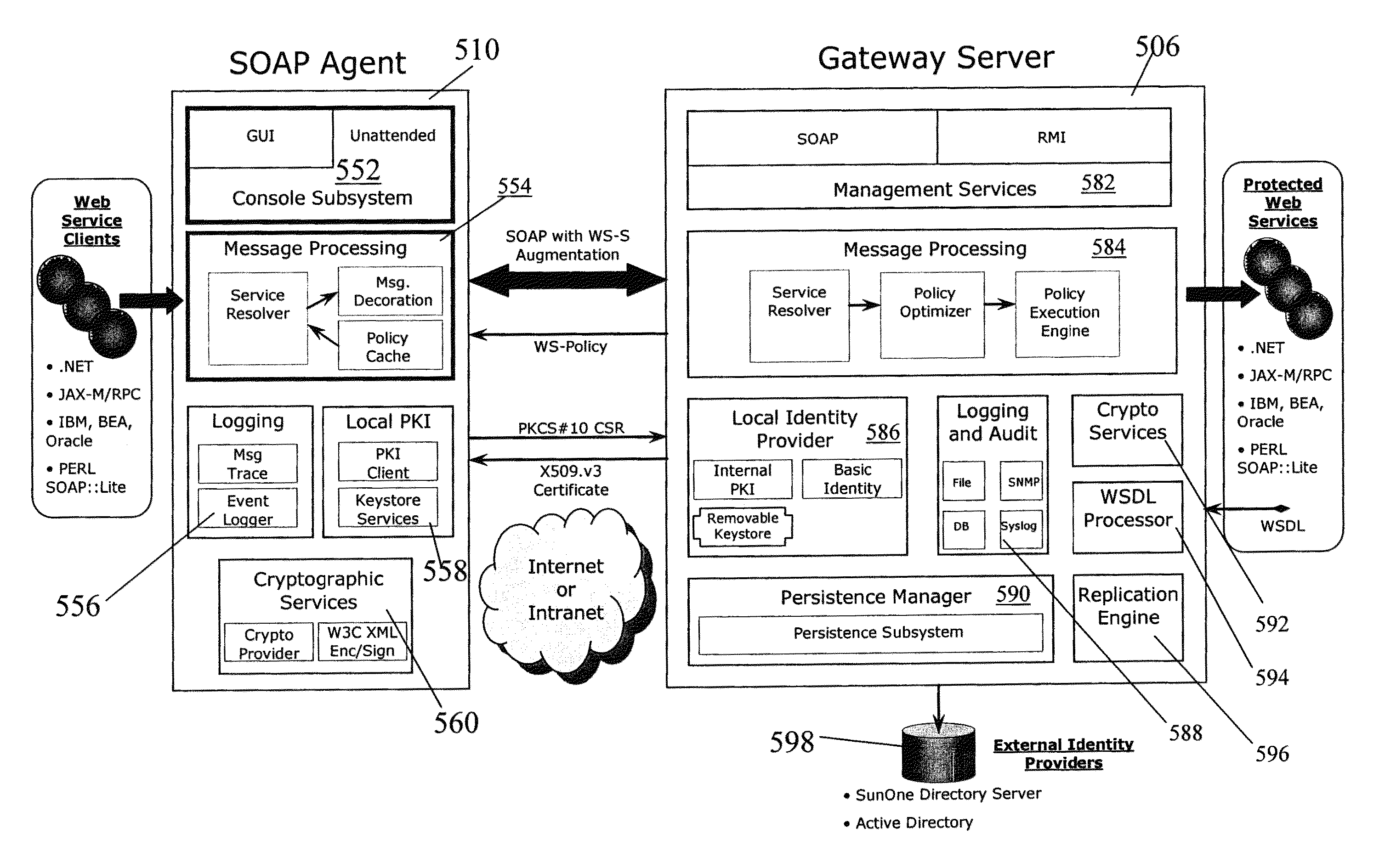System and method for securing web services
a web service and web application technology, applied in the field of distributed computing, can solve the problems of difficult re-use of solutions, affecting the efficiency of web services, and requiring expensive re-development, and achieve the effect of convenient, repeatable and reusable administrative procedures
- Summary
- Abstract
- Description
- Claims
- Application Information
AI Technical Summary
Benefits of technology
Problems solved by technology
Method used
Image
Examples
Embodiment Construction
[0049]In the following description like numeral and references refer to similar structures and functional blocks in the drawings.
[0050]Referring to FIG. 3 there is shown the components for a system 500 for securing Web services 501 according to a general embodiment of the present invention. The system 500 includes a client domain 502 and a Web service domain 504 coupled via the Internet. Communication between the domains are via SOAP messages. Single domains are shown for illustrative purposes only. The client domain includes the client computer 503. The system 500 comprises three major components: a gateway server 506 that resides behind a conventional firewall 508 in the Web service domain 504; a management application software 508 for developing security policies and managing all Web services (the Policy Manager); an agent 510 located in the client domain 502 behind a firewall 512 that secures a transaction according to the policy in effect, before a SOAP message is released to a...
PUM
 Login to View More
Login to View More Abstract
Description
Claims
Application Information
 Login to View More
Login to View More - R&D
- Intellectual Property
- Life Sciences
- Materials
- Tech Scout
- Unparalleled Data Quality
- Higher Quality Content
- 60% Fewer Hallucinations
Browse by: Latest US Patents, China's latest patents, Technical Efficacy Thesaurus, Application Domain, Technology Topic, Popular Technical Reports.
© 2025 PatSnap. All rights reserved.Legal|Privacy policy|Modern Slavery Act Transparency Statement|Sitemap|About US| Contact US: help@patsnap.com



